|
Previous:
Resolution and resolving power< > Next:
Color
Index of this page
Per channel scan performance and noise
One aspect I didn't explore in the first public release
of this test is the per-channel scan performance. Now with the new
scans available of the overhauled Imacon 848, I did take an even
closer look at the scans and discovered something new I hadn't be
aware of before. The images below are crops of the full 8000 ppi
resolution scans. No sharpening has been applied. Each series of
4 pictures per film type represent a crop of the original scans,
and separated by color channel (Red, Green, Blue).
|
Kodak Ektar 100
|
|
Original
|
Red channel
|
Green channel
|
Blue channel
|
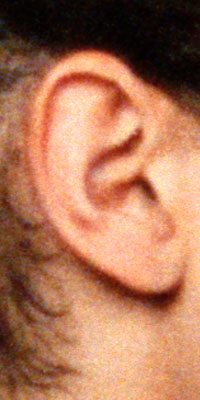
|
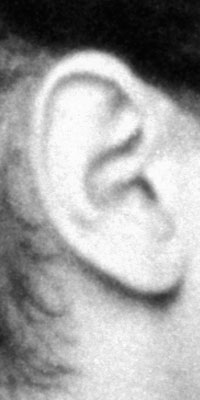
|
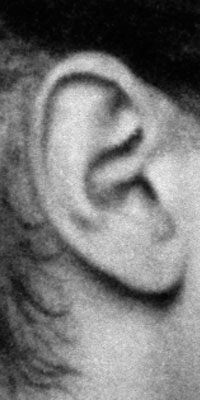
|
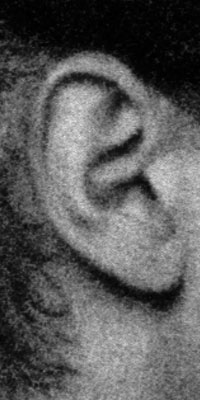
|
Especially noteworthy is the unexpected bad scan result
in the blue channel of this scan, that is also visible in the Kodak
Portra 160 VC scan series below, but not in the Fuji Velvia scan.
The blue channel, disregarding the overal darker appearance (caused
by the simple fact that we are looking a crop of skin tone, and
skin does not have much "blue", hence low values in the
blue channel which are rendered dark by Photoshop), clearly has
a much more "grainy" and "patchy" look than
the other two color channels.
|
Kodak Portra 160VC
|
|
Original
|
Red channel
|
Green channel
|
Blue channel
|
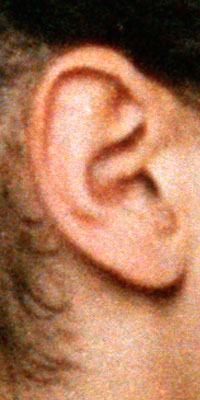
|
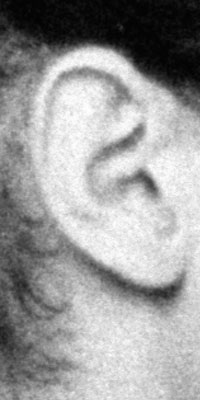
|
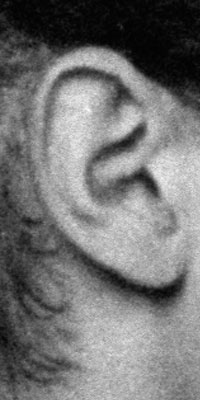
|
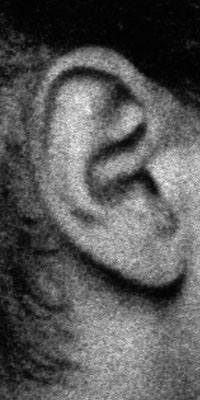
|
Similar results to Kodak Ektar 100, however even more
grainy, since the film itself has more grain. Again, note the blue
channel and the patchy grain therein. To make sure this observation
isn't based on a misinterpretation caused by the differences in
overall brightness and contrast of the channels, I have made a quick
"match" of the Green and Blue channels by changing their
brightness and contrast to approximately match each other. So I
darkened up the Green channel to match the darker Blue channel,
and lightened up the Blue channel to match the lighter Green channel.
You can see the result below next to the original channel results:
|
Kodak Portra 160VC
|
|
Original Green channel
|
Blue channel matched
to Green channel brightness
|
Green channel matched
to Blue channel brightness
|
Original Blue channel
|

|
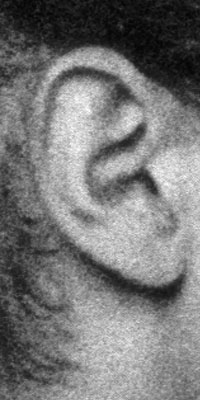
|
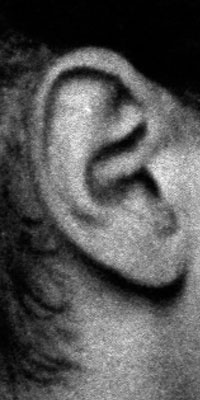
|

|
Notice that, although the differences appear slightly
smaller now, there still is a readily perceptible more grainy appearance
of the Blue channel, so it does indeed seem that this observation
is justifiable. The Blue channel does perform worse.
|
Fuji Velvia 100
|
|
Original
|
Red channel
|
Green channel
|
Blue channel
|
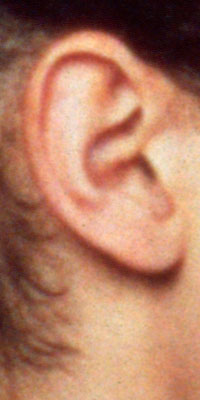
|
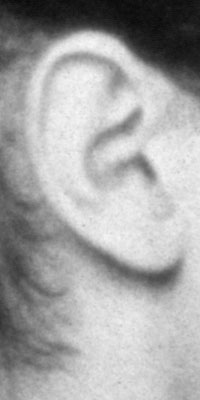
|
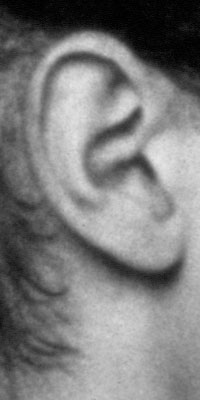
|
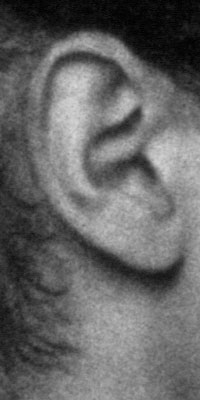
|
Notice that, besides the overall finer grain of the
Fuji Velvia film, that especially the Blue channel has much less
grain in it. If you disregard the difference in overall brightness,
it is hardly more grainy than the Green channel. Maybe still a bit,
but nowhere near the extent to which the color negative film results
are affected.
So, what is actually causing this issue? Why is the
blue channel performance for the color negative films Ektar 100
and Portra 160VC so much worse than that of the Velvia 100 slide
film?
Well, the answer might again lie in the nature of the
color negative film. Not only has color negative film a limited
contrast range that needs to be expanded during the scanning or
wet printing process, but there is something else to take notice
of. Look again at the difference between the color negative and
slide film:
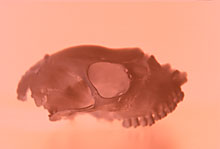
|
Kodak Ektar 100 negative
Limited range of colors in a color negative, only
orange / magenta type.
|
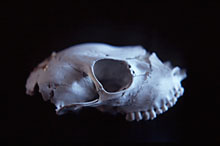 |
Fuji Velvia 100 slide
Full range of colors in slide film
|
Notice the color of the color negative, well, what is
it? Something like orange / pink / magenta? Hey, doesn't that remember
me of something? It looks suspiciously like a filter needed to use
tungsten film (a film designed to be used under artificial light
conditions) under daylight conditions. Such a filter is an effective
blue light blocking filter to compensate for the
extraneous blue light sensitivity of the tungsten film...
That means that any blue light emitted by the scanners
light source, is to some part effectively blocked by the color negative
film. Now that small amount of blue light that manages to get through
the darkest part of the negative, probably must be boosted electronically
considerably to give any useful reading, leading to a more grainy
scan result in this channel. Considering the very patchy result
of the Blue channel, it seems likely that especially one of the
dyes of the color layers in the color negative film is blocking
the light.
Now of course, the extreme high density blacks of shadow
areas in a slide / color positive film like Velvia are just as effective
in blocking blue (or any other wavelength of) light. In fact, they
probably block it even more... But there is one crucial difference
with color negative film: in slide film, the areas of highest dye
densities are shadow areas, so they are being translated in deep
blacks and shadows in the scan. Any "grainy" look caused
by excessive noise because of a low electronic reading will hardly
be visible in a slide film scan, as it is hidden in the dark parts
of the scan.
Now contrast this with the situation of a color negative
film: the areas of mid to high dye density, effectively blocking
blue light transmission, are coding for light to midtone values
in the scan!
Well, a final look at the Alpha 900:
|
Sony Alpha 900
|
|
Original
|
Red channel
|
Green channel
|
Blue channel
|
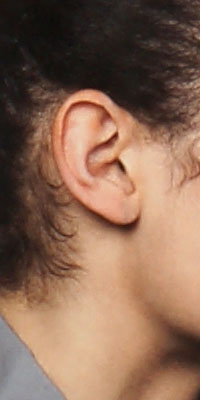
|
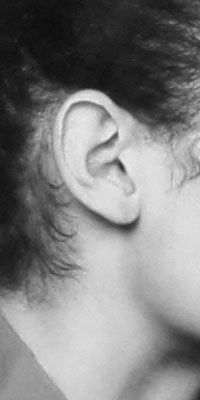
|
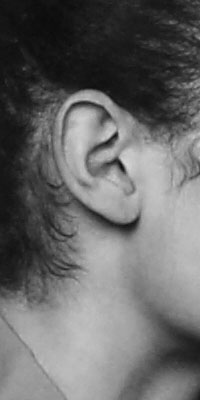
|
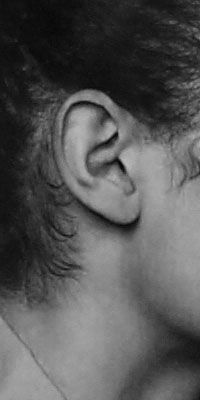
|
Noteworthy is the fact that, contrary to the scans, all channels
seem to be performing about equal, even the Blue channel has very
fine detail. Especially noteworthy is the cheekbone. Do you notice
the barely visible slightly darker and patchy, vertical line
pattern there? I am referring to the lower right 1/4 corner. At
first, I was thinking that there might be some sensor / camera issue
here, causing the uneven result... but than I had a closer look
at the original testchart, and YES, it was there! A barely visible,
very faint black dotted offset screen printing pattern, that is
amazingly registered by the Alpha 900 in it's Blue channel! Phew...
who would expect that? Again a prove of how much detail is captured
by the Alpha 900.
Previous:
Resolution and resolving power< > Next:
Color
|